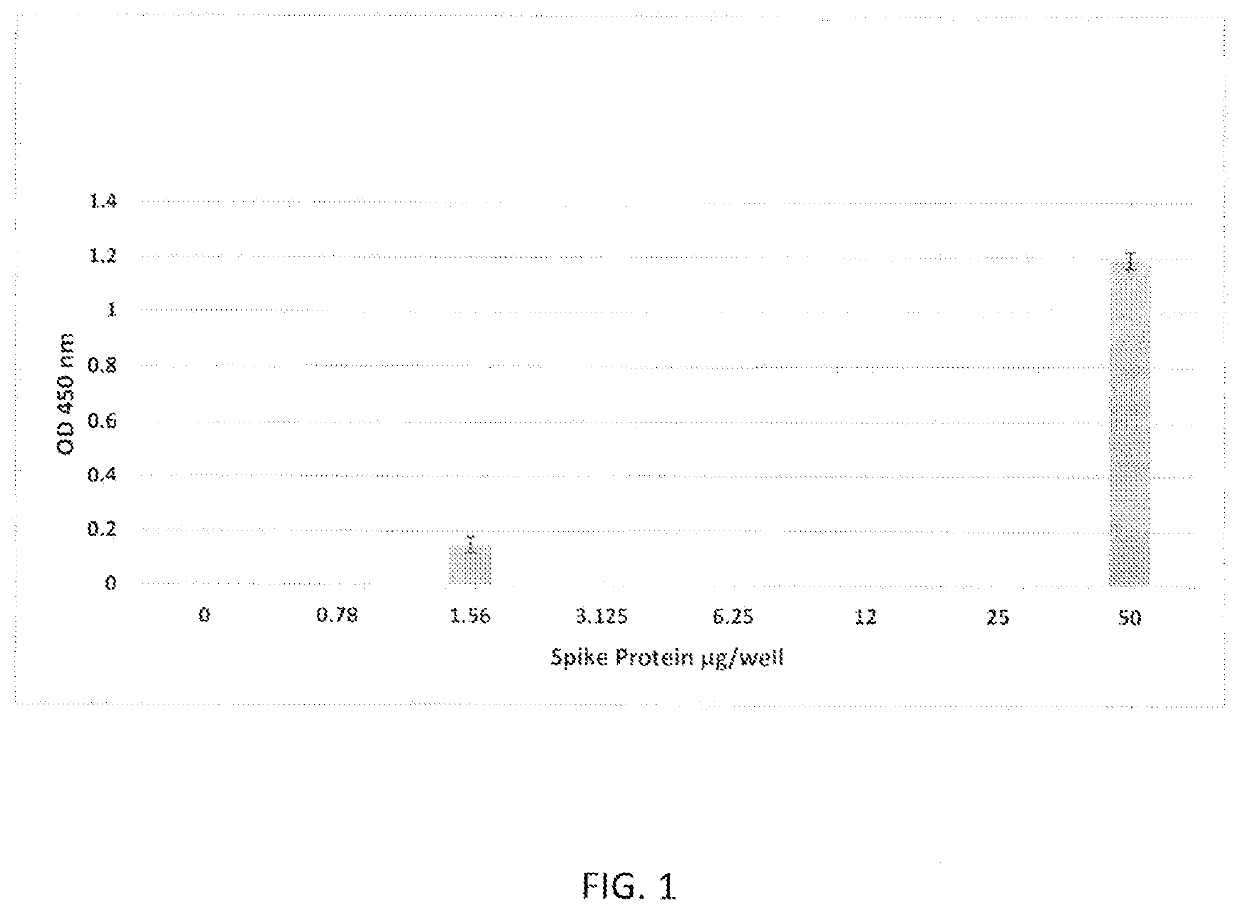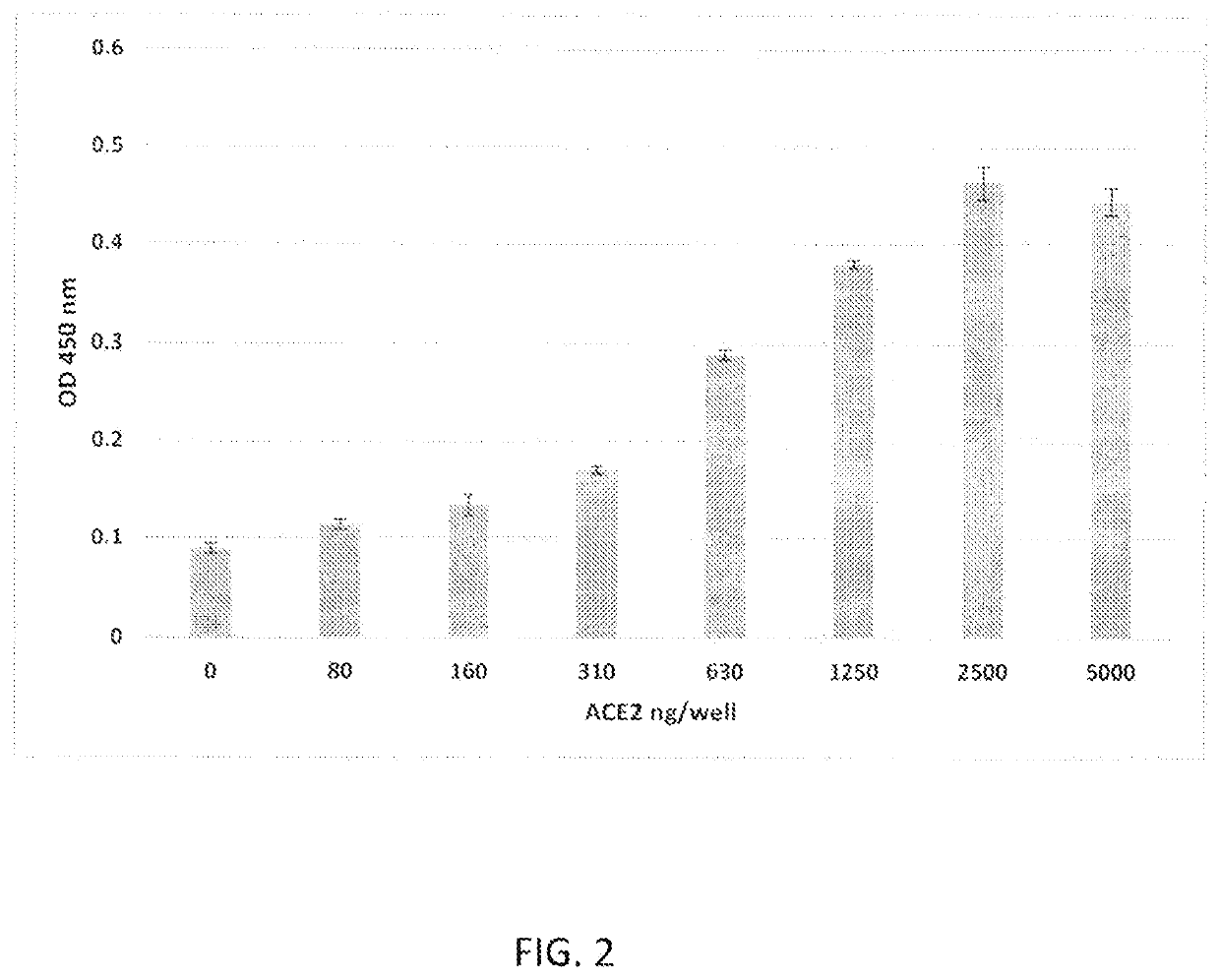Rapid viral assay
- Summary
- Abstract
- Description
- Claims
- Application Information
AI Technical Summary
Benefits of technology
Problems solved by technology
Method used
Image
Examples
example 1
ding Assay of ACE2 and SARS-CoV-2 Spike Protein to Detect COVID-19
[0035]Two experiments were conducted to observe the rapidity, specificity and sensitivity of the methods of the invention for detecting and quantifying viruses, as well as to set negative and positive controls for these methods.
[0036]In the first experiment, microtiter wells (Immulon, ThermoFisher, Waltham, Mass.) were coated with 100 μl of 1 μg / well of ACE2 (RayBiotech #230-30165-100) in bicarbonate buffer (Sigma, St. Louis) and incubated overnight at 4° C. The wells were washed and then blocked with 200 μl / well StartingBlock™ (ThermoScientific, Rockford, Ill.). Wells were washed three times with phosphate-buffered saline (PBS, Sigma Aldrich, PA) supplemented with 0.05% Tween-20 (PBS-Tw; Fisher Scientific, Pittsburgh, Pa.) at room temperature. Next, serial dilutions of Spike protein (SARS-CoV-2 Spike protein recombinant 51 subunit purchased from RayBiotech, #230-01101) in PBS were added to the wells, starting at a co...
PUM
| Property | Measurement | Unit |
|---|---|---|
| Time | aaaaa | aaaaa |
| Nanoscale particle size | aaaaa | aaaaa |
| Sensitivity | aaaaa | aaaaa |
Abstract
Description
Claims
Application Information
 Login to View More
Login to View More - R&D
- Intellectual Property
- Life Sciences
- Materials
- Tech Scout
- Unparalleled Data Quality
- Higher Quality Content
- 60% Fewer Hallucinations
Browse by: Latest US Patents, China's latest patents, Technical Efficacy Thesaurus, Application Domain, Technology Topic, Popular Technical Reports.
© 2025 PatSnap. All rights reserved.Legal|Privacy policy|Modern Slavery Act Transparency Statement|Sitemap|About US| Contact US: help@patsnap.com


